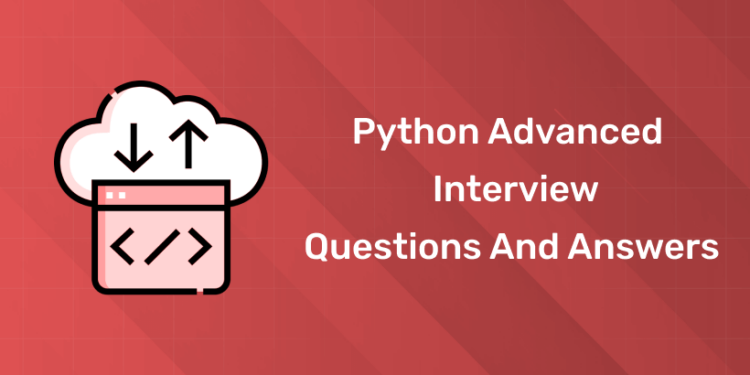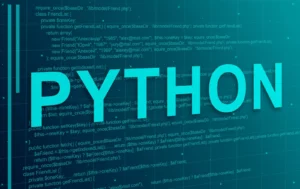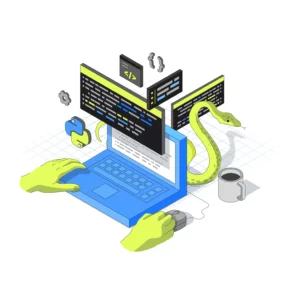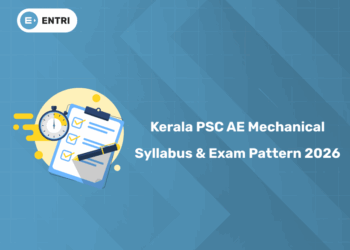Table of Contents
Python interview! The one thing that led you to this article is the Python interview that you may be having in the near future. At the same time, there’s no harm in brushing up your python skills through interview questions as well. This article provides you with the most advanced and trickiest python interview questions and their answers for you to prepare!
Check out this video by Entri in Malayalam!
Introduction to Python
Python is a widely used programming language with a wide range of uses. The Python language has applications in businesses and industries that the majority of you are already familiar with, from machine learning to web development. One of the most well-liked general-purpose programming languages is Python, a high-level, dynamically typed language. It is one of the programming languages with the quickest rate of growth, and software developers, mathematicians, data analysts, scientists, network engineers, students, and accountants all utilize it. High-level, object-oriented, and interpretive programming languages include Python. Since its source code is compiled to bytecode and then interpreted, it is known as an interpreted language.
Ready to take your python skills to the next level? Sign up for a free demo today!
Additionally, the Python framework features modules and packages, which aid with code reuse. Open source software exists for Python. It is available for free download and uses in applications. The source code can also be accessed and altered. There is no need to compile the code because the cycle of edit-test-debug is quick. supports handling of exceptions. Any code can make mistakes. Python creates exceptions that can be handled, preventing program crashes. automatically managing memory. Python’s memory management system uses a private heap, a data structure that acts as a queue and houses all of the language’s objects and data structures.
| Are you aspiring for a booming career in IT? If YES, then dive in | ||
| Full Stack Developer Course | Python Programming Course | Data Science and Machine Learning Course |
Python Tricky Interview Questions
1: Which of the following data types is immutable in Python?
Despite its popularity and adaptability, Python remains one of the simpler languages to learn. In addition to being “human-readable,” Python is likely to require the fewest lines of code if you compare the identical software written in three other languages. In just three to six months, you should be able to master the basics of Python and start working on your projects. Depending on your skill level and effort level, this will vary, but you can rest assured that Python is one of the simpler programming languages to learn. Let us look into some python tricky interview questions.
-
How does Python manage its memory?
The Python Memory Manager is responsible for managing memory in Python. The memory that the manager allows to Python is in the form of a private heap area. This private heap is where all Python objects are kept and are unavailable to programmers. Python does, however, offer some fundamental API functions to operate with the private heap space.
-
What are namespaces in Python? What is their purpose?
In Python, a namespace makes ensuring that object names are distinct and may be used without colliding. Python implements these namespaces as dictionaries with a corresponding “object” serving as the key.
-
What does Python’s Scope Resolution mean?
In some cases, objects with the same name but different functions exist in the same scope. Python automatically engages scope resolution in certain situations.
-
What do Python decorators do?
In essence, decorators in Python are functions that extend the capabilities of an already-existing function without altering the function’s structure.
-
What are comprehensions for dicta and lists?
Like decorators, Python comprehensions are syntactic sugar constructions that assist in creating modified and filtered versions of lists, dictionaries, or sets from a given list, dictionary, or set.
-
What in Python is a lambda? Why is it employed?
Python’s lambda function is an anonymous function that can take any number of parameters but only one expression. It is typically employed when a temporary anonymous function is called for.
-
In Python, how do you clone an object?
The assignment operator (=) in Python does not copy objects. Rather, it establishes a connection between the already-existing object and the desired variable name. In Python, we need to utilize the clone module to duplicate an object.
-
What distinguishes Python’s xrange and range functions?
Functionality-wise, xrange() and range() are fairly similar. The sole distinction between them is that range() gives a Python list, whereas xrange() returns an xrange object, and they both produce a sequence of integers. Unlike range(), xrange() produces the value as it goes rather than generating a static list. This method, known as “yielding,” is frequently employed with an object-type generator.
-
What exactly are pickling and unpickling?
Python’s serialization procedure is known as pickling. In Python, any object can be serialized as a byte stream and stored in memory as a file. The exact opposite of pickling is unpickling. It loads the object into memory after deserializing the byte stream to reconstruct the objects saved in the file.
-
What does Python’s PYTHONPATH mean?
You can add more directories to the PYTHONPATH environment variable, which instructs Python where to look for modules and packages. Maintaining Python libraries that you do not want to install in the global default location can be extremely helpful in this situation.
Experience the power of our web development course with a free demo – Enroll Now!
Python Advanced Interview Questions
Let us look into some of the advanced Python interview questions for Python developers.
-
How can we get a Python script to run on a Unix system?
Two steps must be taken to make a Python script executable on Unix. The first line must always start with #, and the script file mode must be executable.
-
What in Python is a boolean?
One of the built-in data types in Python is called a boolean, and its primary values are true and false. The procedure used to change a value into a boolean value in Python is called bool().
-
What are Python String replacements for and formats?
The Python String format() function is mostly used to accurately format the input string into an output or result. The primary purpose of the Python String Replace function is to return a copy of the string in which every instance of a substring has been replaced by a different substring.
-
What do the Python functions do?
Functions are described in Python as blocks of code that can only be executed when they are called. The def keyword in Python is used to define a function.
-
Definition of Python Self?
Python defines self as an object or a class instance. In Python, the self is specifically regarded as the first parameter. Additionally, Python’s self keyword allows us to access all of the classes’ methods and attributes.
-
How does Python define docstring?
Python’s docstring, also known as a documentation string, offers a mechanism to create documentation for the language’s classes, functions, and modules.
-
How is data from a Python array removed?
The remove() or pop() functions in Python can be used to remove the elements from an array.
-
Describe Django?
Django is a cutting-edge Python web framework that promotes agile growth and clean, pragmatic design. It was created by professional developers, so you can focus on developing your app instead of trying to invent the wheel.
-
In Flask, how can we access sessions?
A signed cookie is used in a flask to force the user to view and edit the session contents. Additionally, the user can only alter the session if the flask.secret key is present.
-
What does Python’s encapsulation mean?
One of the most crucial components of object-oriented programming is encapsulation. Encapsulation is the binding or wrapping of code and data into a single cell.
🚀 Start Coding Today! Enroll Now with Easy EMI Options. 💳✨
Gain expertise in Django and open doors to lucrative opportunities in web development.
Start Learning With EMI Payment OptionsConclusion
In addition to having a solid understanding of the subject, you should place extra emphasis on the application portion to give yourself an advantage during the interview. Python programming is increasingly important for automated testing. The above-mentioned advanced python interview questions will help you to prepare well for upcoming interviews.
If you feel like learning more about python, check out Entri’s python programming course. With industry experts as mentors and top quality materials, you are bound to master python language in no time. Save these questions and answers for revision and all the best for your interview!
Get hands-on with our python course – sign up for a free demo!
Related Articles
| Our Other Courses | ||
| MEP Course | Quantity Surveying Course | Montessori Teachers Training Course |
| Performance Marketing Course | Practical Accounting Course | Yoga Teachers Training Course |














